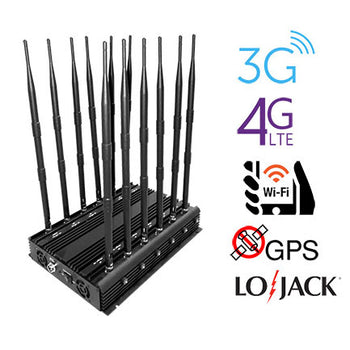Power isn't the only factor affecting jammer coverage
This section discusses the range of jammers that are one of the most controversial topics in the field of jammers and are also a concern for most customers.
It is known that each interfering device has a different blocking range. In general, the higher the power, the longer the radius of interference. The higher the power, the larger the size of the jammer and the more cooling system is required. This is why desktop jammers usually have a wider range of interference than portable jammers. Therefore, before you buy a jammer, you need to determine the type of jammer you need and the range of interference you need. Both need to be taken into account. That way, you'll get what you need.
The second factor is the interference of local signal strength or the distance from the signal tower. The closer the telephone signal tower is, the stronger the telephone signal will be and the worse the interference effect will be. If the local equipment is near the signal tower, the power of the mobile tower is usually much higher than the power of the jammer, so the small signal jammer may not work. It also emphasizes that using a low-power jammer to block a high-power device, such as a high-power Bluetooth wireless router, may not function properly.

Finally, this is a local environment. Different environmental interference effects are also different. The range of interference in open areas is greater than in areas with many buildings. This is why the measured radius of interference is usually better than the actual range. Because the test is in an open place. Because the signal can be blocked / interfered by stone walls, the grid forms metal such as Faraday cages (including "fake" lead windows) and tin foil insulation, which interferes with indoor coverage areas. The reliability of the device will be low. This means that if you use a jammer indoors, the walls may cause the glass to block the signal and prevent it from interfering with the signal in another room.
First, when a GPS jammer is manufactured, it is tested. There are many necessary tests such as battery life, transmission frequency, etc., including interference radius tests. Since these devices are often tested in open areas, manufacturers always believe that the test results are more effective than they really are. You know that buildings and various concrete structures can interfere with the transmission of signals. Most of us live in big cities and are surrounded by skyscrapers. The signal strength of the local mobile phone is also an influential factor. So if an interfering device can't block a phone within 30 meters, don't be surprised.













